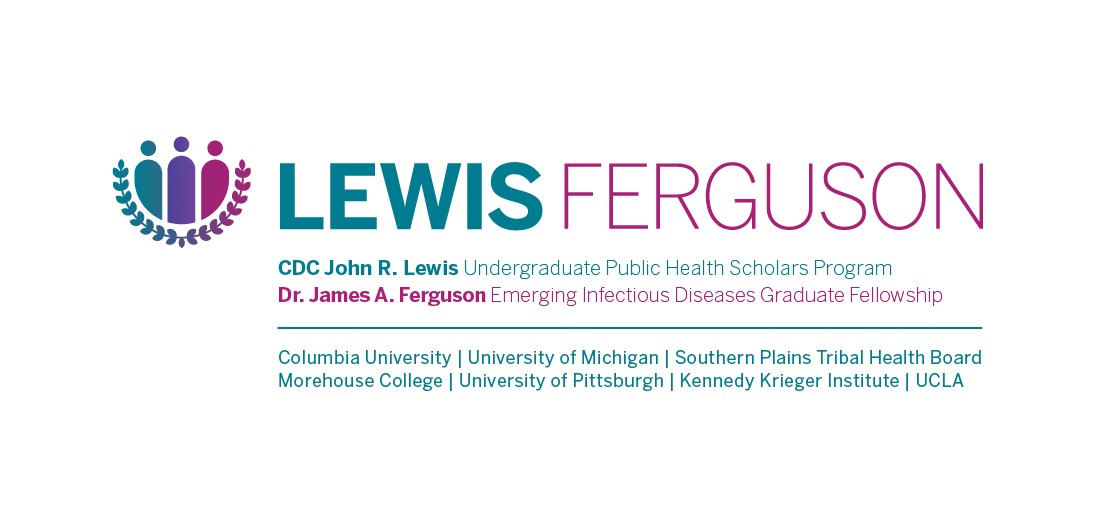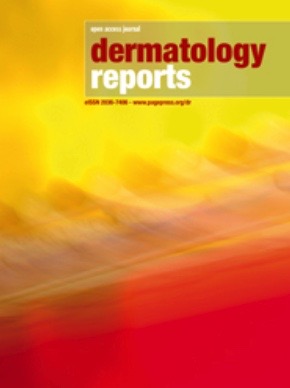Report on the Contributions of Professor Taha Taha to Sustainable Development Goals
Advancements in SDG 3: Good Health and Well-being
Professor Taha Taha’s career has been centrally focused on achieving key targets within Sustainable Development Goal 3, which aims to ensure healthy lives and promote well-being for all at all ages. His work has directly addressed critical global health challenges, particularly in the context of the HIV/AIDS epidemic.
- Target 3.3: End the Epidemics of AIDS: For over two decades, Professor Taha has been the Principal Investigator (PI) of the Malawi Clinical Trials Unit (CTU). This NIH-funded research consortium has been instrumental in conducting pivotal HIV treatment, prevention, and cure trials. His leadership in multi-site trials and research networks has significantly contributed to the global effort to combat HIV.
- Target 3.1 & 3.2: Reduce Maternal Mortality and End Preventable Deaths of Newborns: A primary focus of Professor Taha’s research has been the prevention and treatment of HIV in pregnant and breastfeeding women. This work is exemplified by landmark studies such as the PROMISE study (Promoting Maternal and Infant Survival Everywhere), the POISE study in Malawi, and the multi-country PROMOTE study. These initiatives are fundamental to protecting the health of mothers and preventing vertical transmission of HIV, thereby reducing infant mortality and improving maternal health outcomes.
- Non-communicable Diseases: Professor Taha also served as the PI for a research training program on “HIV-Related Non-communicable Disease Complications in Malawi” (2013-2018), addressing the evolving health needs of populations living with HIV and contributing to a broader understanding of well-being.
Fostering SDG 4: Quality Education and Capacity Building
Professor Taha has made substantial contributions to Sustainable Development Goal 4 by building institutional and human resource capacity in public health, both at the Bloomberg School and internationally.
- Higher Education and Mentorship: Over his career, Professor Taha has advised more than 75 master’s and doctoral students, shaping the next generation of public health leaders. For over 20 years, he has been the primary instructor for the “Epidemiologic Inference in Outbreak Investigations” course, a core component of the epidemiology curriculum.
- International Training and Capacity Building: His commitment to education extends to his work in Malawi, where he led several critical training programs supported by the Fogarty International Center. These include:
- The Informatics Training program in Malawi (1998-2003).
- The Johns Hopkins University HIV/AIDS International Training and Research Program for Malawi (AITRP; 1996-2013).
- The research training program on HIV-Related Non-communicable Disease Complications (2013-2018).
These programs have been vital in establishing a sustainable base of local scientific expertise.
Promoting SDG 5 and SDG 10: Gender Equality and Reduced Inequalities
Professor Taha’s work inherently supports the principles of gender equality and the reduction of inequalities by focusing on vulnerable populations in low-resource settings.
- SDG 5 (Gender Equality): By concentrating his research on the health of pregnant and breastfeeding women, Professor Taha’s work empowers women through improved access to life-saving healthcare, enabling them to make informed decisions about their health and the health of their children.
- SDG 10 (Reduced Inequalities): His extensive, long-term commitment to conducting research and building capacity in Malawi directly addresses the health disparities that exist between high- and low-income countries. His efforts ensure that cutting-edge scientific research benefits populations that are most in need.
Strengthening SDG 17: Partnerships for the Goals
The success and impact of Professor Taha’s work are a testament to the power of global partnerships, a cornerstone of Sustainable Development Goal 17.
- Multi-Stakeholder Collaboration: The Malawi Clinical Trials Unit (CTU) is a model of international partnership, functioning as a research consortium that unites Johns Hopkins University, the Kamuzu University of Health Sciences, and the Malawi Ministry of Health.
- Global Cooperation: This collaboration, funded by the U.S. National Institutes of Health (NIH), demonstrates a successful framework for pooling international resources, expertise, and local knowledge to address pressing global health issues effectively. Professor Taha’s leadership within various NIH/NIAID/DAIDS HIV research networks further underscores his role in fostering global scientific cooperation.
Summary of Career and Recognition
Professional Journey
On February 28, 2025, the Department of Epidemiology formally recognized Professor Taha Taha for his distinguished contributions as a physician, teacher, and public health scientist. He joined the Bloomberg School of Public Health in 1996 and has accumulated over 25 years of scientific, leadership, and training experience through his extensive international work in designing and implementing observational studies and clinical trials.
Educational Background
- MBBS: University of Khartoum, Sudan (1975)
- Master’s in Community Medicine and Malariology: University of Khartoum, Sudan (1982)
- MPH: San Diego State University (1986)
- PhD, Epidemiology/Reproductive Health: Johns Hopkins Bloomberg School of Public Health (1992)
Analysis of Sustainable Development Goals (SDGs) in the Article
1. Which SDGs are addressed or connected to the issues highlighted in the article?
-
SDG 3: Good Health and Well-being
- The article’s primary focus is on Professor Taha Taha’s extensive work in public health. This includes designing and implementing clinical trials for HIV prevention and treatment, reproductive health research, and addressing non-communicable diseases. Specific studies mentioned, such as PROMISE (Promoting Maternal and Infant Survival Everywhere), directly target health outcomes.
-
SDG 4: Quality Education
- Professor Taha’s role as a teacher, mentor, and leader of training programs is a central theme. The article highlights his 20+ years teaching “Epidemiologic Inference in Outbreak Investigations,” advising over 75 master’s and doctoral students, and leading training programs in Malawi, such as the “Informatics Training program” and the “HIV-Related Non-communicable Disease Complications” research training program. This demonstrates a commitment to building local capacity and providing quality higher education.
-
SDG 5: Gender Equality
- The article specifies that Professor Taha’s work has a “focus on pregnant and breastfeeding women.” Studies like POISE, which examines pregnancy outcomes, and the broader work in reproductive health, directly address the health needs of women, which is a key component of gender equality.
-
SDG 17: Partnerships for the Goals
- The work described is built on multi-stakeholder partnerships. The Malawi Clinical Trials Unit (CTU) is explicitly mentioned as a “research consortium funded by NIH that encompasses the Johns Hopkins University and the Kamuzu University of Health Sciences, and the Malawi Ministry of Health.” This North-South collaboration between academic institutions, a national government, and international funding bodies (NIH, PEPFAR) exemplifies the spirit of SDG 17.
2. What specific targets under those SDGs can be identified based on the article’s content?
-
Under SDG 3 (Good Health and Well-being):
- Target 3.1: Reduce the global maternal mortality ratio. This is addressed by the PROMISE study (“Promoting Maternal and Infant Survival Everywhere”) and the focus on pregnant women’s health.
- Target 3.2: End preventable deaths of newborns and children under 5. The PROMISE study’s focus on infant survival is directly relevant.
- Target 3.3: End the epidemics of AIDS. Professor Taha’s two decades of work leading the Malawi CTU, which “conducts HIV treatment, prevention and cure trials,” is a direct contribution to this target.
- Target 3.4: Reduce premature mortality from non-communicable diseases. This is connected to the research training program on “HIV-Related Non-communicable Disease Complications in Malawi.”
- Target 3.7: Ensure universal access to sexual and reproductive health-care services. The work in “HIV prevention and treatment, with a focus on pregnant and breastfeeding women” and “other reproductive health research” supports this target.
-
Under SDG 4 (Quality Education):
- Target 4.c: Substantially increase the supply of qualified teachers, including through international cooperation for teacher training in developing countries. Professor Taha’s long-term role in teaching, mentoring, and leading research training programs in Malawi directly contributes to increasing the local supply of qualified public health scientists and practitioners.
-
Under SDG 5 (Gender Equality):
- Target 5.6: Ensure universal access to sexual and reproductive health and reproductive rights. The research focused on HIV prevention and reproductive health for “pregnant and breastfeeding women” aligns with ensuring this specific group has access to necessary health services.
-
Under SDG 17 (Partnerships for the Goals):
- Target 17.6: Enhance North-South cooperation on and access to science, technology and innovation. The partnership between US-based Johns Hopkins University and NIH with Malawi’s Kamuzu University of Health Sciences and Ministry of Health is a clear example of this.
- Target 17.16: Enhance the global partnership for sustainable development, complemented by multi-stakeholder partnerships. The Malawi CTU, involving academia, government, and international funders like NIH and PEPFAR, is a model of such a partnership.
3. Are there any indicators mentioned or implied in the article that can be used to measure progress towards the identified targets?
-
For SDG 3:
- Implied Indicators for Targets 3.1 & 3.2: The POISE study, which examines “Pregnancy outcomes,” and the PROMISE study, focused on “Maternal and Infant Survival,” imply the measurement of maternal and infant mortality and morbidity rates.
- Implied Indicators for Target 3.3: The mention of “HIV prevention and treatment,” “cure trials,” and the “era of universal ART in Malawi” implies the use of indicators such as HIV incidence, prevalence, and the proportion of people with HIV receiving antiretroviral therapy (ART).
-
For SDG 4:
- Direct Indicator for Target 4.c: The article provides a quantitative measure by stating Professor Taha has advised “more than 75 master’s and doctoral students.” The number of individuals trained through the various programs he led (“Informatics Training program,” “AITRP”) would also serve as a direct indicator of increasing the supply of qualified professionals.
-
For SDG 17:
- Qualitative Indicator for Targets 17.6 & 17.16: The existence and longevity (“over two decades”) of the Malawi Clinical Trials Unit (CTU) as a functioning, multi-stakeholder consortium serves as a qualitative indicator of a successful and durable partnership for science and development.
4. Summary Table of SDGs, Targets, and Indicators
| SDGs | Targets | Indicators (Mentioned or Implied in the Article) |
|---|---|---|
| SDG 3: Good Health and Well-being |
3.1: Reduce maternal mortality. 3.2: End preventable deaths of newborns. 3.3: End the epidemic of AIDS. 3.4: Reduce mortality from non-communicable diseases. 3.7: Ensure universal access to sexual and reproductive health-care. |
– Measurement of pregnancy outcomes, maternal survival, and infant survival (PROMISE & POISE studies). – Conducting HIV treatment, prevention, and cure trials. – Access to universal Antiretroviral Therapy (ART). – Research into HIV-related non-communicable disease complications. |
| SDG 4: Quality Education | 4.c: Increase the supply of qualified teachers and researchers in developing countries. | – Number of students advised (“more than 75 master’s and doctoral students”). – Number of training programs led (Informatics, AITRP, etc.). |
| SDG 5: Gender Equality | 5.6: Ensure universal access to sexual and reproductive health. | – Specific focus on HIV prevention and reproductive health for “pregnant and breastfeeding women.” |
| SDG 17: Partnerships for the Goals |
17.6: Enhance North-South cooperation in science and technology. 17.16: Enhance multi-stakeholder partnerships. |
– Existence of the Malawi Clinical Trials Unit (CTU), a long-term consortium between Johns Hopkins University, Kamuzu University of Health Sciences, the Malawi Ministry of Health, and funded by NIH and PEPFAR. |
Source: publichealth.jhu.edu







